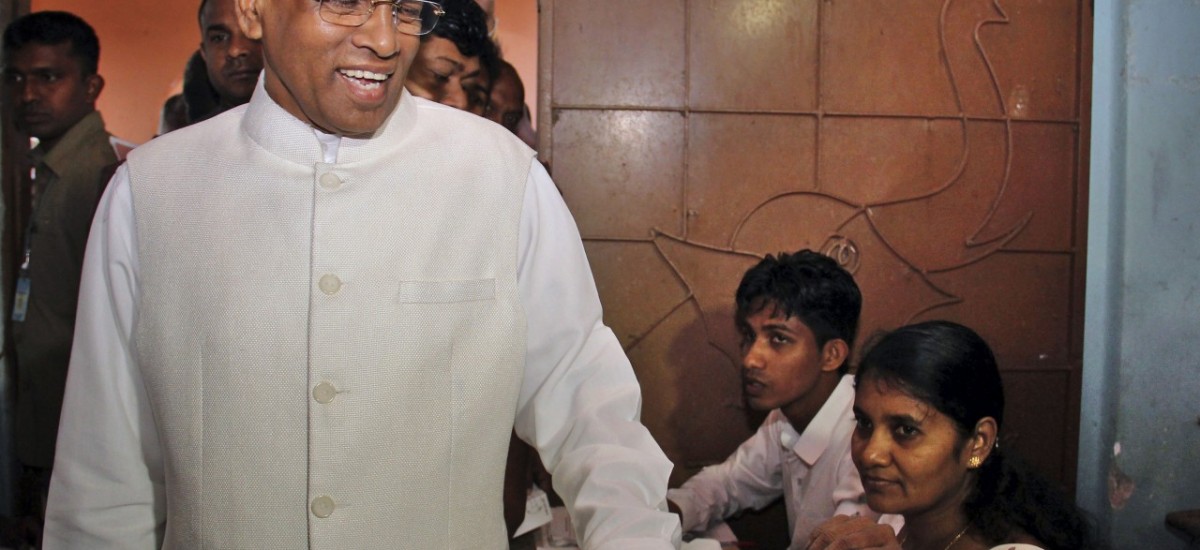Image courtesy Salon
The conclusion of the one hundred (100) days is a good time to compare and indeed contrast the Maithripala Sirisena Administration from the Rajapakse rule that it replaced. This is particularly relevant in the context that Brother number two (no pun intended), Gotabhaya Rajapakse, has suggested that Mahinda Rajapakse should be prime minister, under President Sirisena. This suggestion of the Mahinda Rajapakse premiership is also what motivates the small appendages of the UPFA, the MEP, the NFF, the EPDP etc and a section of a Rajapakse old guard of about thirty SLFP MPs and declining following the removal of some of their number from the SLFP Central Committee.
Negating the people’s mandate
The biggest objection of course to a Mahinda Rajapakse premiership is that it is actually a complete negation of the mandate of the people given on January 8th this year. The Maithripala Sirisena presidential campaign was not just an election, it was a campaign to end Rajapakse misrule and replace it with a Sirisena era of “yahapalanya” or good governance. Every aspect of Rajapakse misrule was placed before the sovereign people of Sri Lanka and the people delivered their verdict. The people are sovereign their voice needs to be heeded. “vox populi, vox dei” or the voice of the people is the voice of god, was the rallying cry of the ancient Greek movements which led to representative democracy. We hear a lot of talk about the 5.8 million who voted for Mahinda Rajapakse, but what of the 6.2 million plus who voted for Maithripala Sirisena. A public mandate was sought and given to end Rajapakse misrule. Rajapakse lost, hence he and his fan club need to accept that.
A tainted vote
Further the 5.8 million was also a tainted vote. With alleged abuse of TRC, Divineguma and other government funds, fraudulent documents, state sector staff and a campaign long defamation by the state media of Maithripala Sirisena. The forthcoming general election, without the abuse of the state resources and media would see Rajapakse acolytes’ loose considerable support. Further the vast bulk of the 5.8 million votes which Rajapakse received were SLFP votes and these should provide no further support for a Rajapakse return. The presidential election was not an inter SLFP caucus or primary for the result to be a mere seat swop and pecking order change between Maithripala Sirisena and Mahinda Rajapakse.
A world of a difference
However the biggest impediment to a Rajapakse premiership under a Sirisena Presidency is simply this. The two world views, visions for the country, governing style, political philosophy (ideology if you like) and leadership lifestyle are not just poles apart but completely and diametrically opposed to each other.
President Sirisena believes and calls himself the chief servant of the people, while Mahinda Rajapakse encouraged and allowed himself, to be called and referred to as a king. 6.2 million Sri Lankans prefer to be citizens of a republic rather than subjects in a monarchy. President Sirisena believes in an inclusive, tolerant and pluralistic Sri Lanka while Mahinda Rajapakse allowed, at best (and encouraged at worst) discord and disharmony. There have been no violent mob attacks on mosques, Muslim owned businesses or Koran burnings after Maithripala Sirisena became president and Gotabaya Rajapakse was sent packing. The extremists are still there but defanged and reduced to doing violence to the national flag by removing the two stripes representing minorities. The apologetic Dulles Allaperuma should be more careful about the company he keeps and the nature of the rent a mob that is hired. Distorting the national flag is an offence under the Penal Code and the police, while producing the suspects for being in contempt of court, for their demonstration outside the Bribery Commission, should also investigate the distortion of the national flag.
The long list of contrasts and hence incompatibility between Mahinda Rajapakse and Maithripala Sirisena is very long. President Sirisena’s governance is consultative and consensus seeking while Mahinda Rajapakse bulldozes his say and way. President Sirisena keeps his family strictly personal and out of governance, while the Rajapakse’s transformed themselves into a ruling family. The Sirisena Administration seeks to be transparent and accountable, while governance under the Rajapakse’s from the mega deals to the constitutional reforms were shrouded in secrecy and accountability was not included in the Rajapakse dictionary. President Sirisena and indeed Prime Minister Wickramasinghe are generally simple and not given to illusions of grandeur and waste of public funds. In contrast, President Rajapakse and his regime believed that public funds and state resources from the state media, to the national carrier to state lands, even private lands, state coffers, government posts, were all personal property to be dispensed as he wishes to his family and friends, for their use and use. The list is endless and will need to be explored further, in future articles.
However the most substantive objections to a Rajapakse premiership are these.
- Mahinda Rajapakse does not believe his misrule was wrong, has made no expression of regret for his rank excesses, which promises for the electorate, of more of the same Rajapakse abuse if reelected.
- Prime Minister Ranil Wickramasinghe and for that matter Opposition Leader Nimal Siripala de Silva have accepted and submit to President Sirisena’s public mandate and political leadership, while Mahinda Rajapakse and acolytes clearly do not.
Mahinda Rajapakse should retire with grace and dignity rather than being the godfather of a circus seeking his return.
(The writer is the Chairman of the Resettlement Authority. However, the views expressed are strictly personal).

